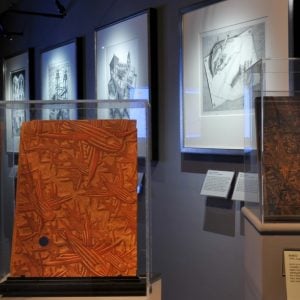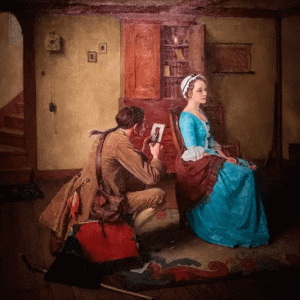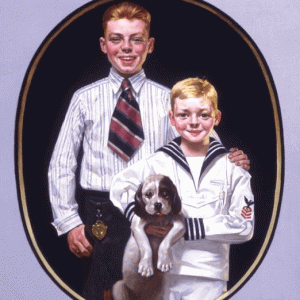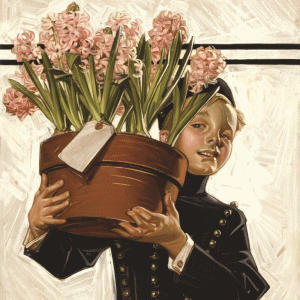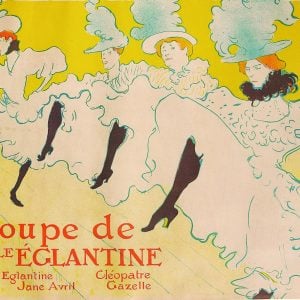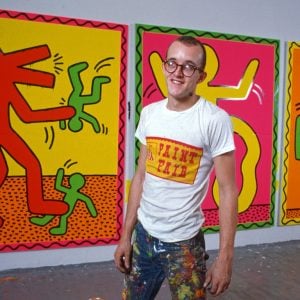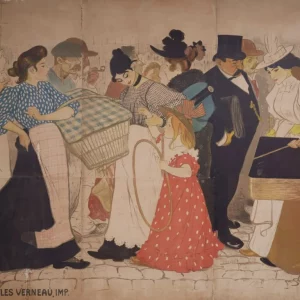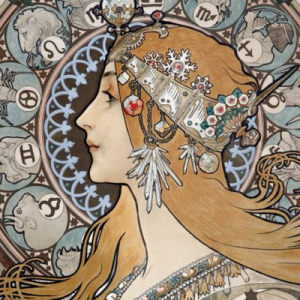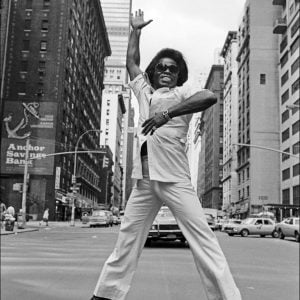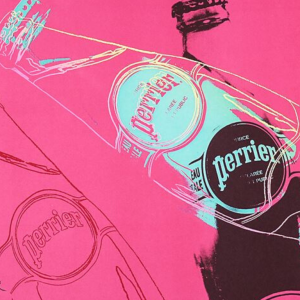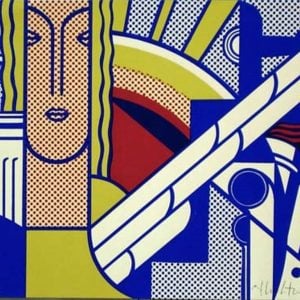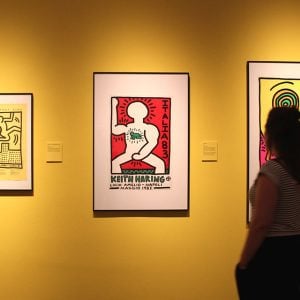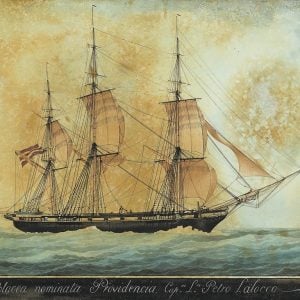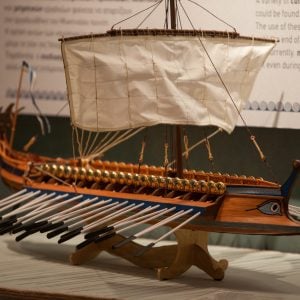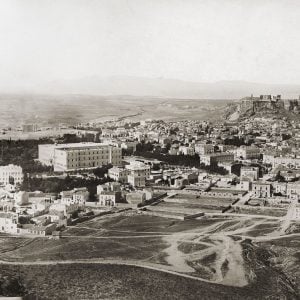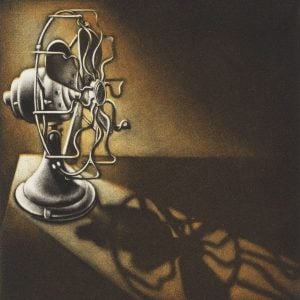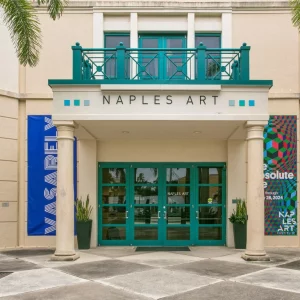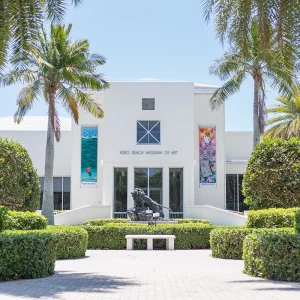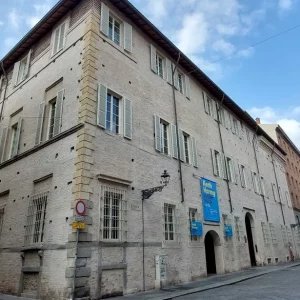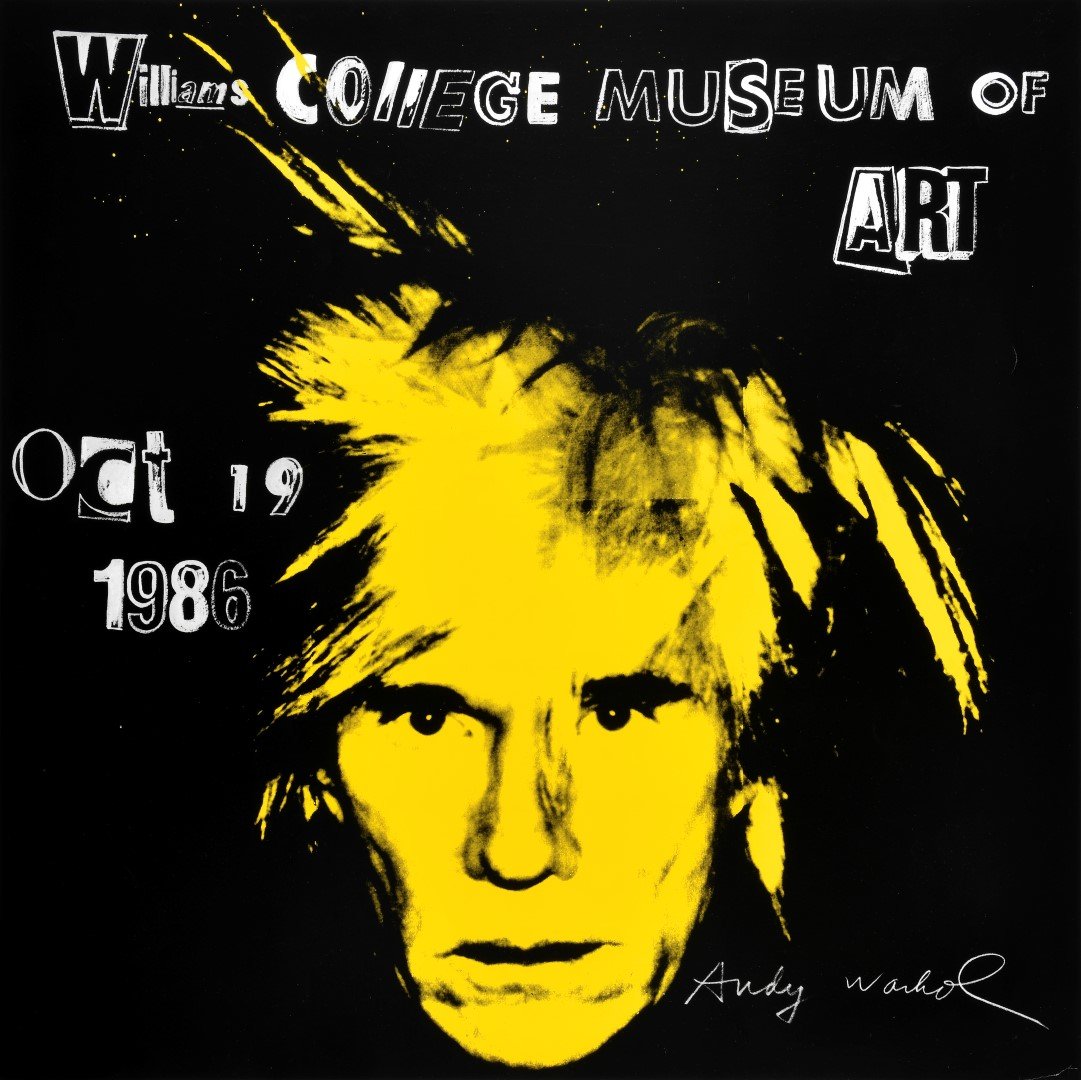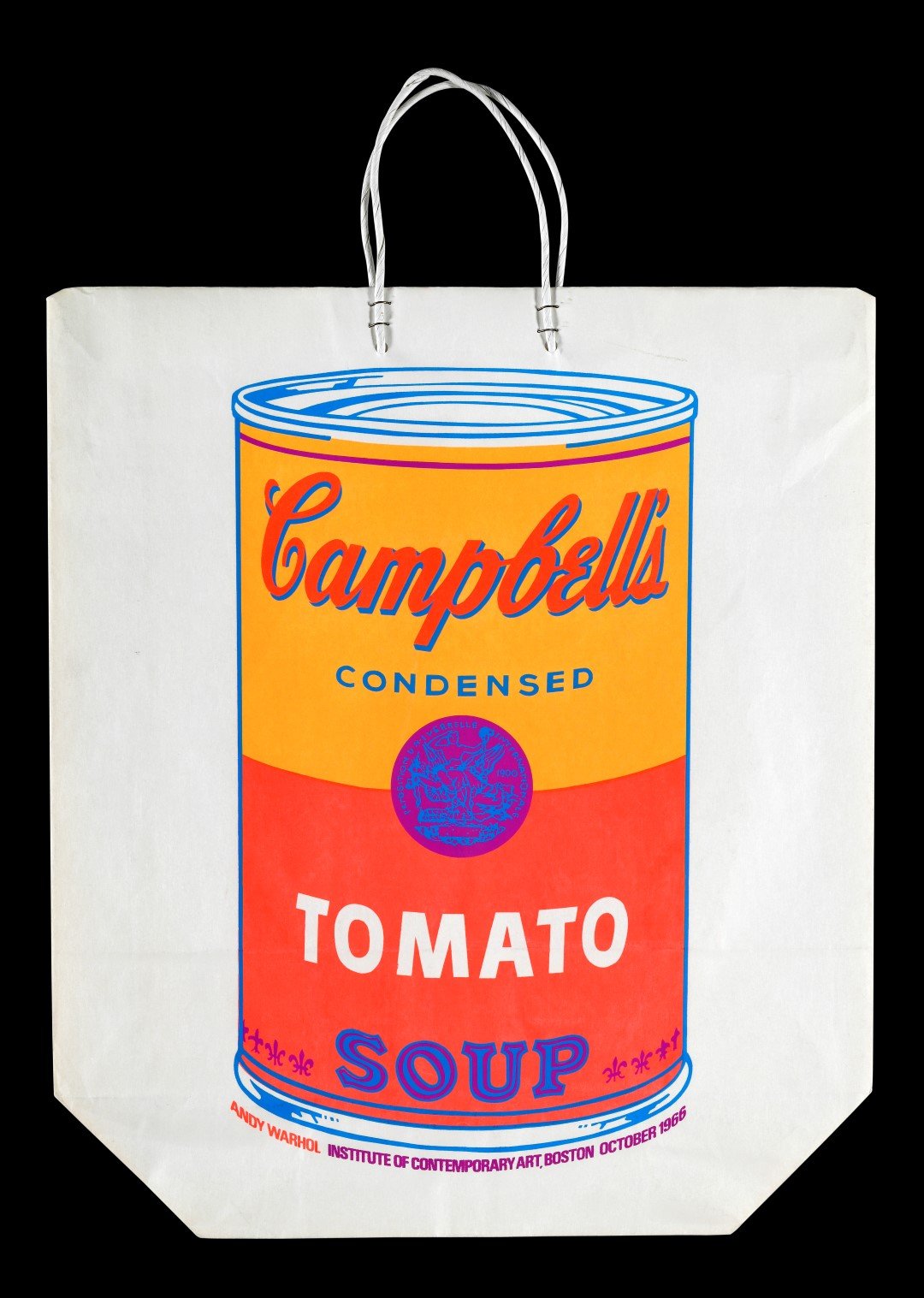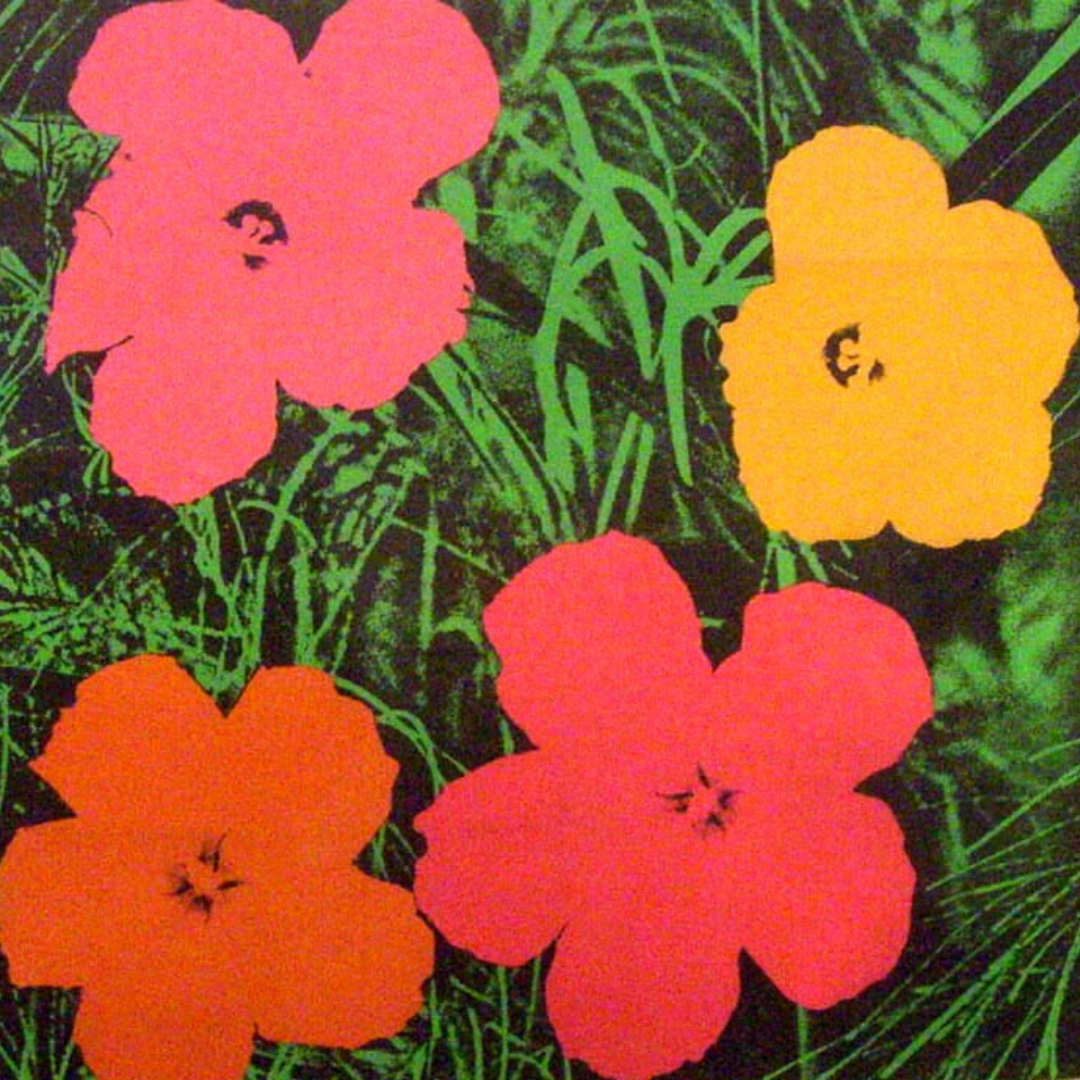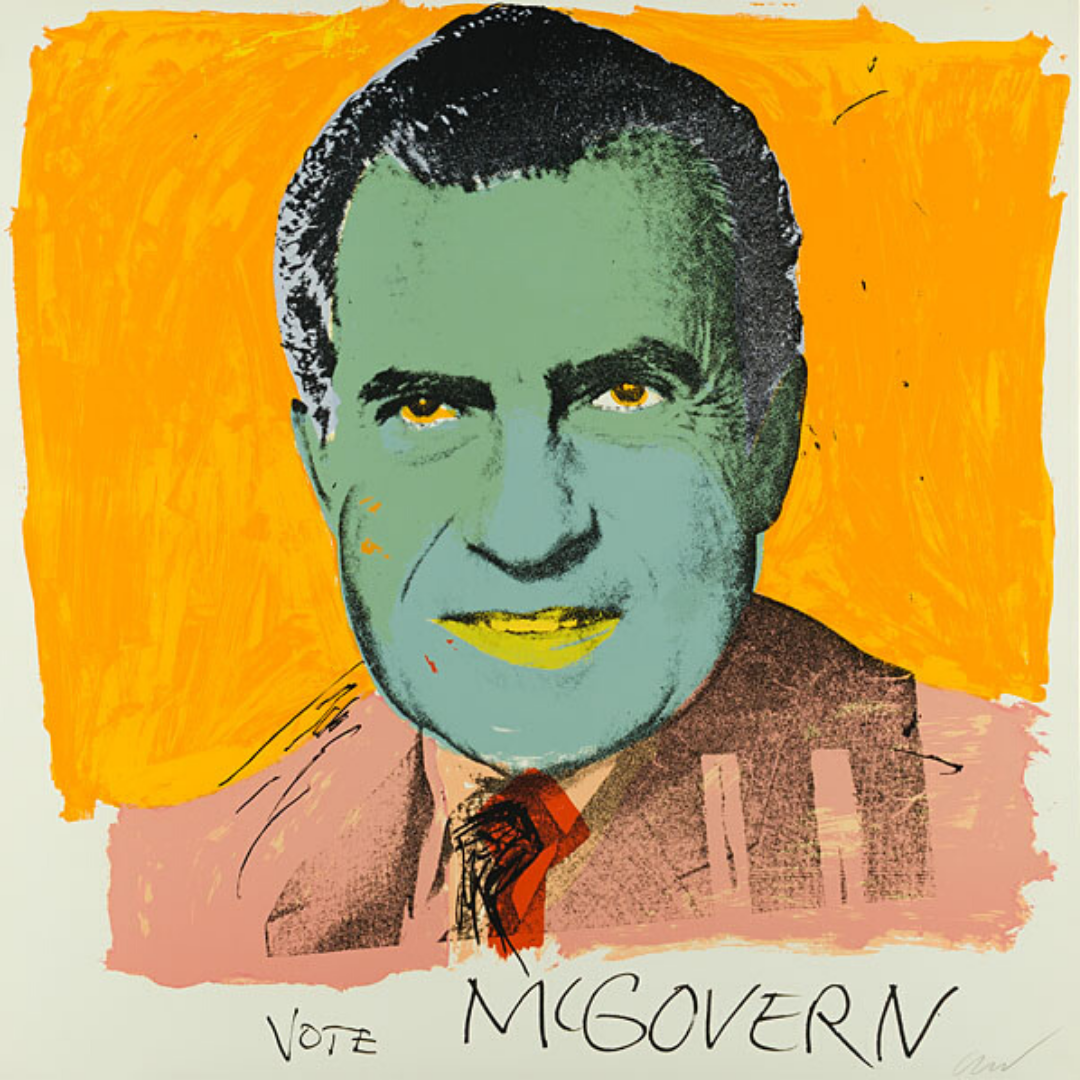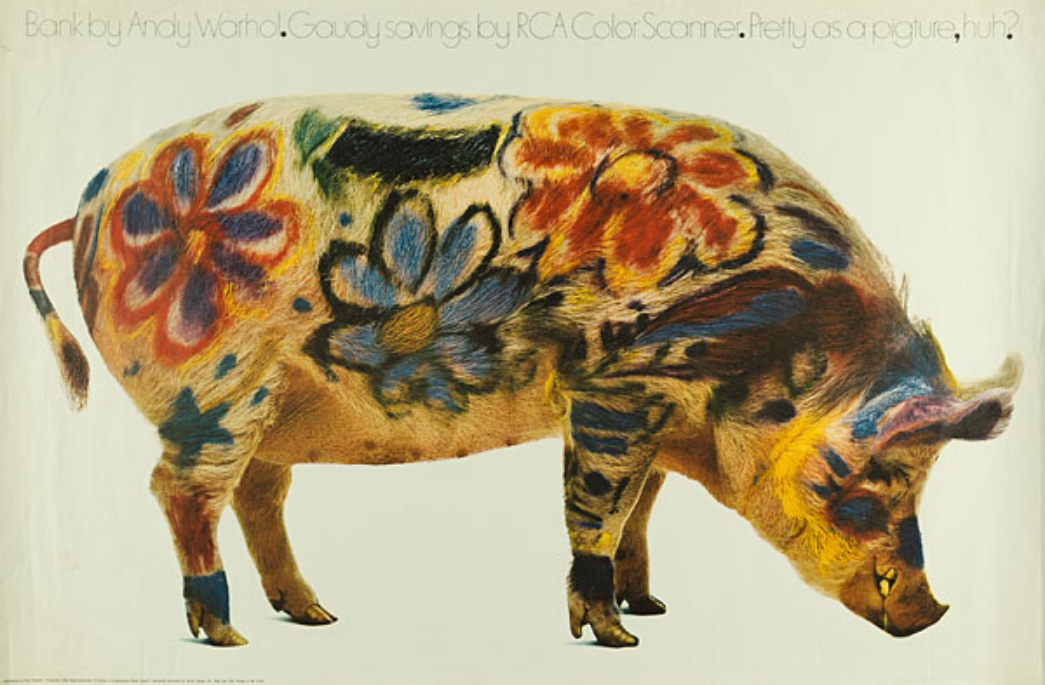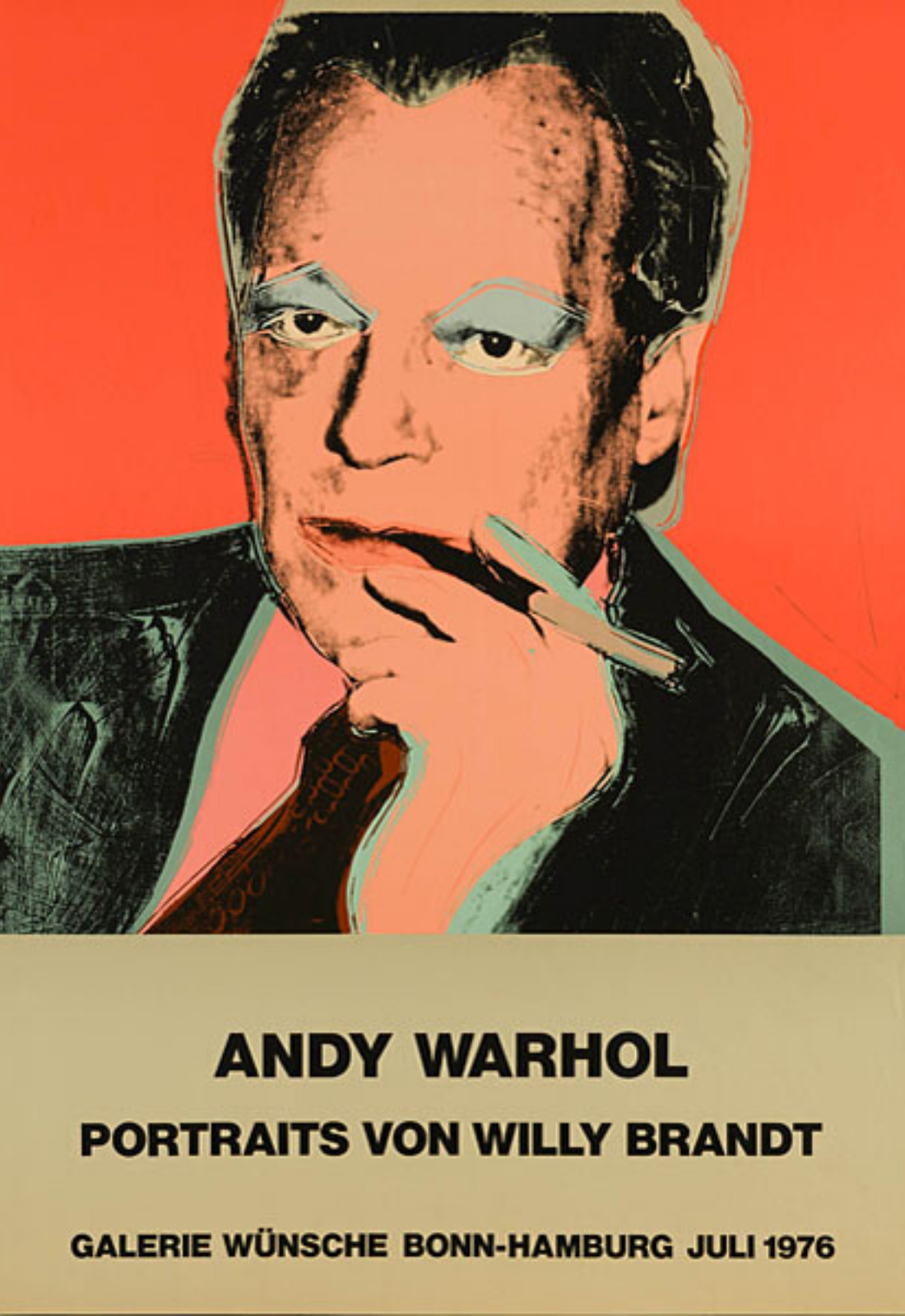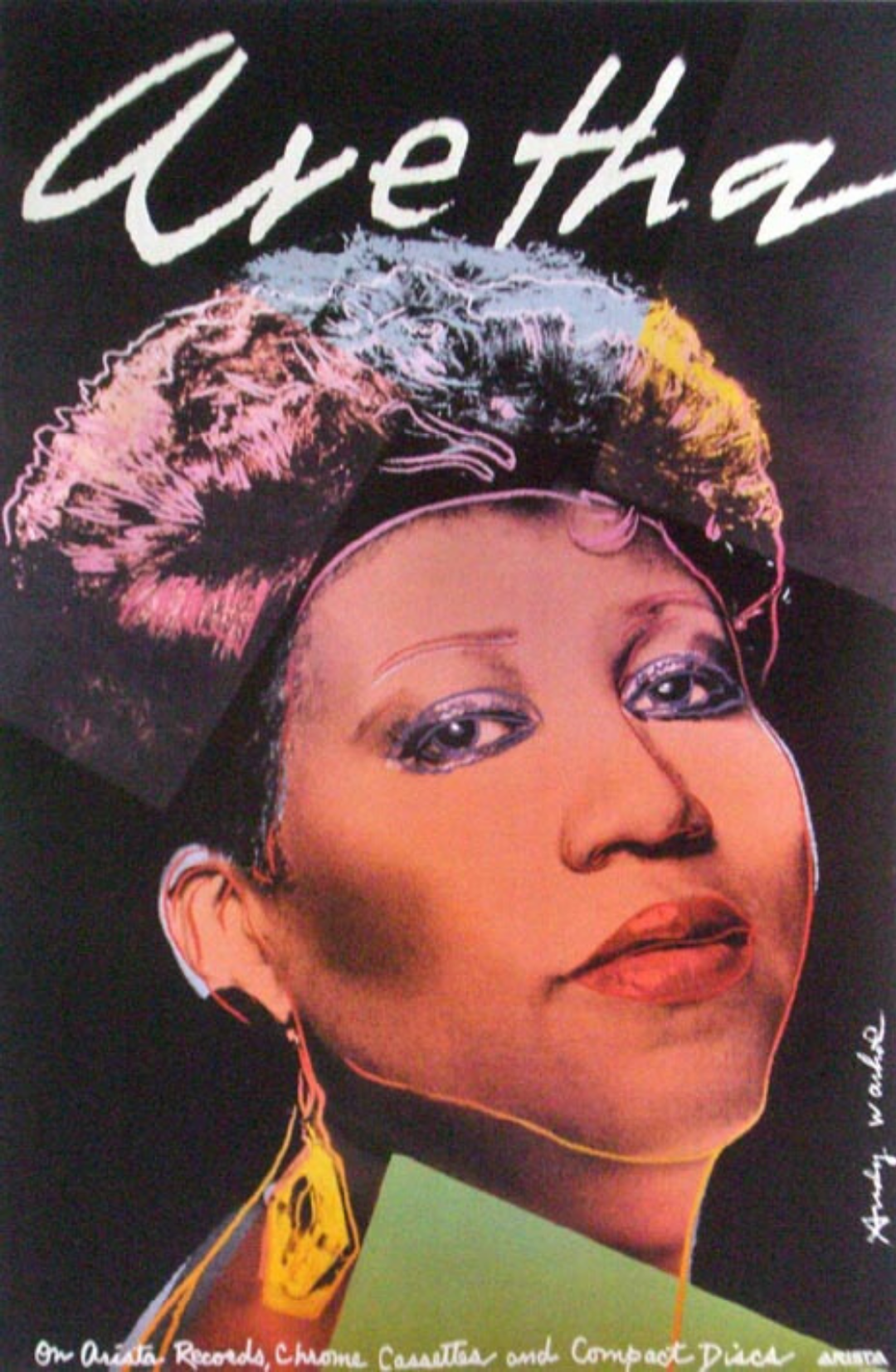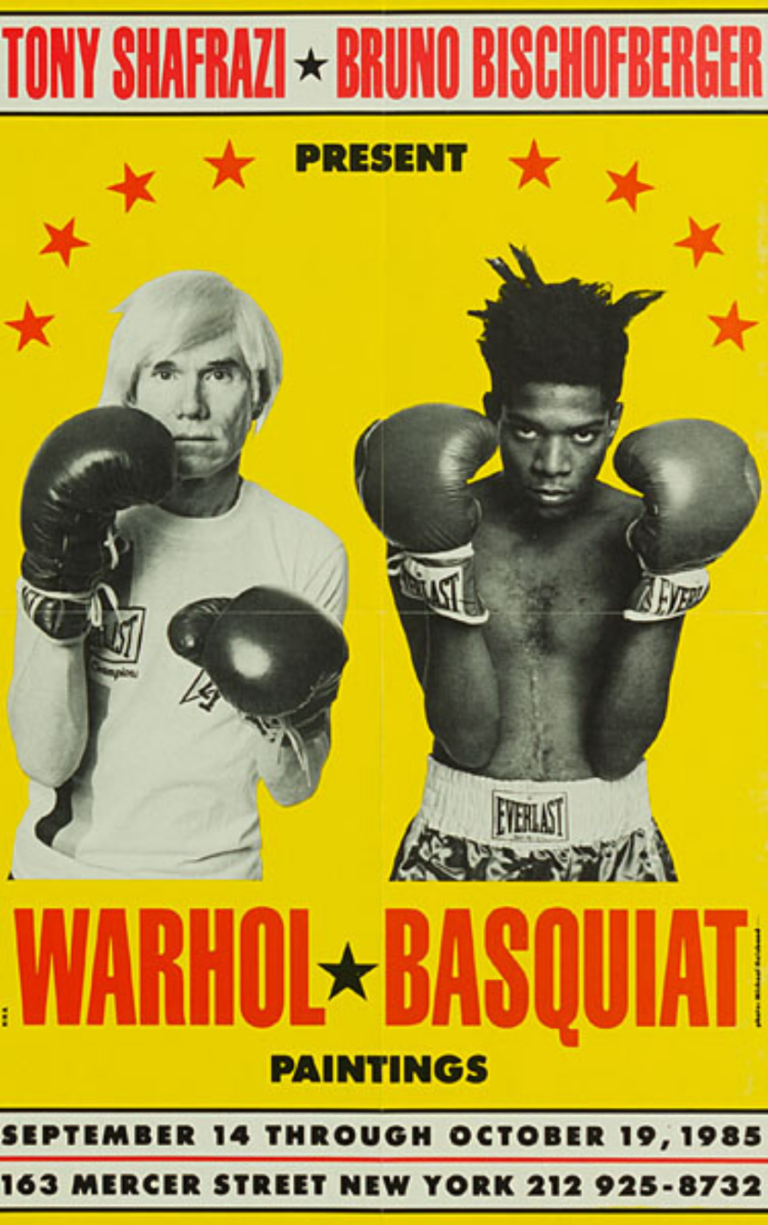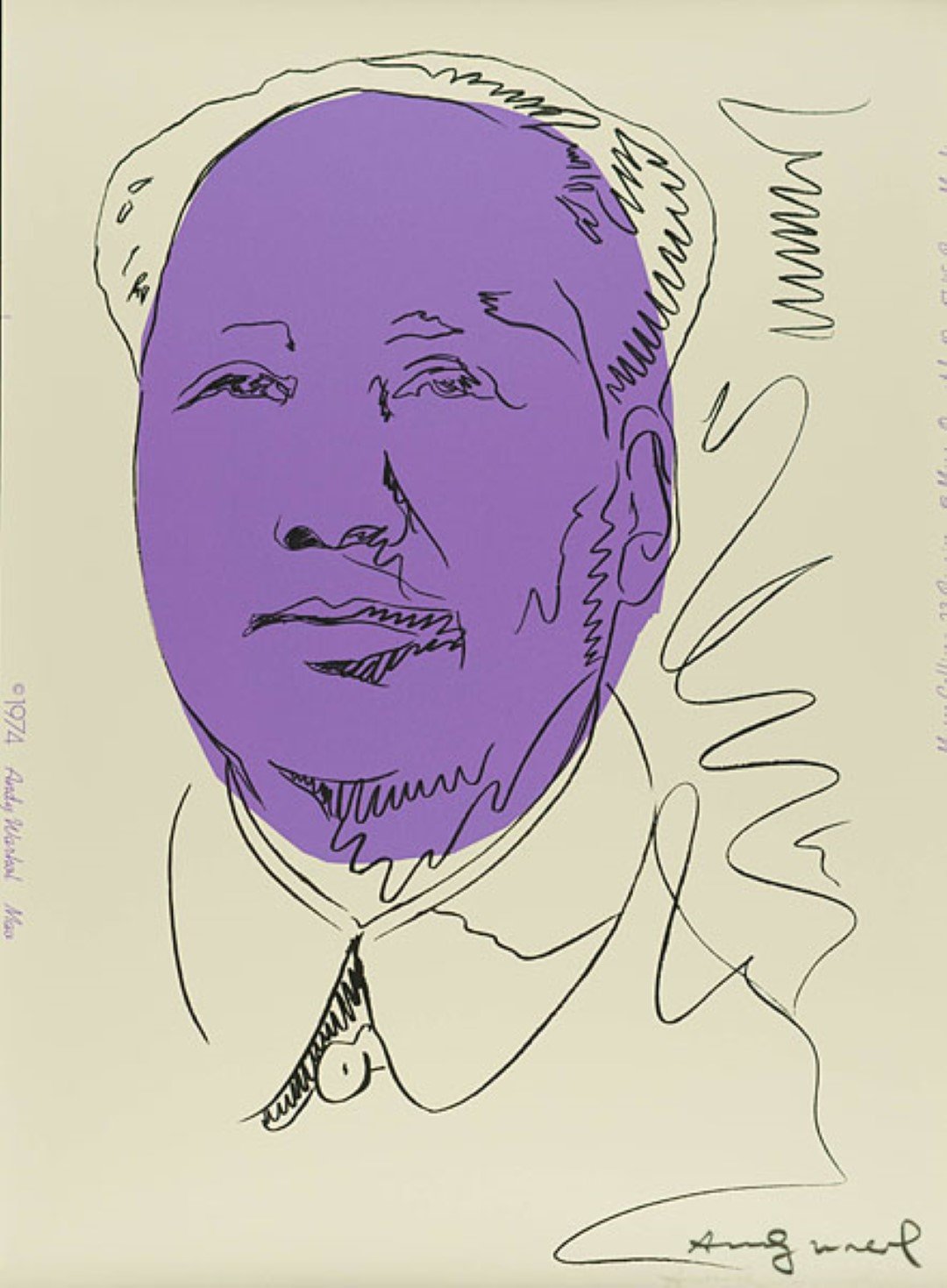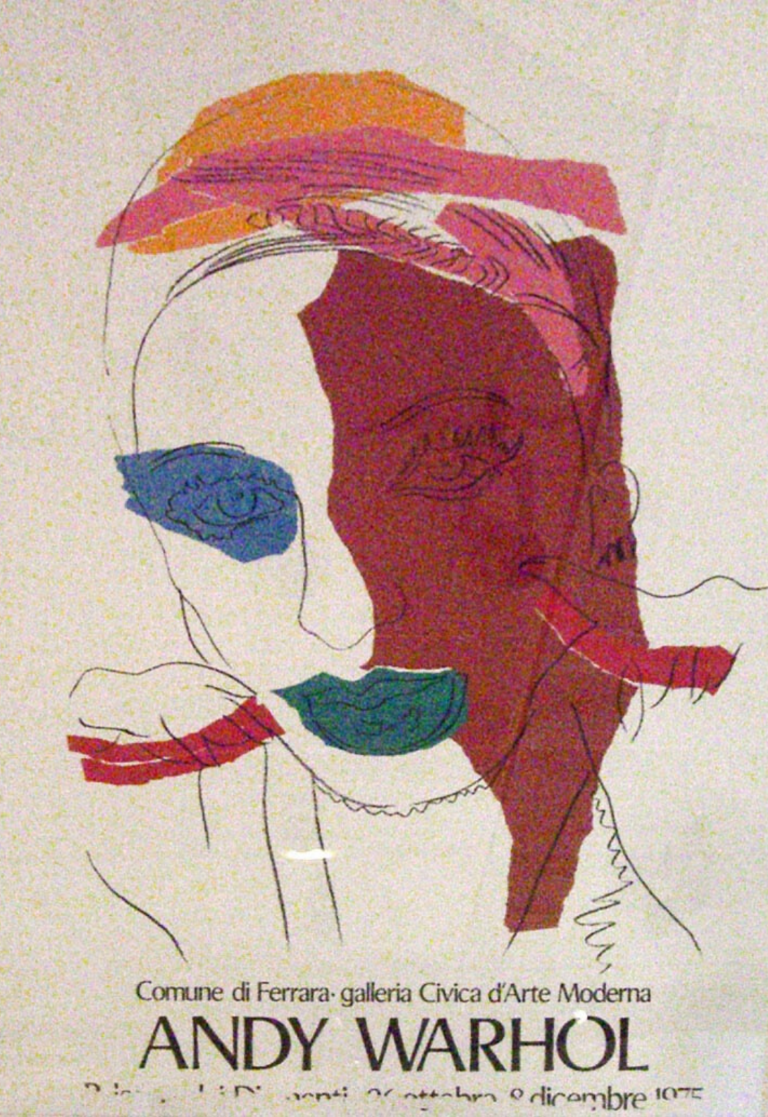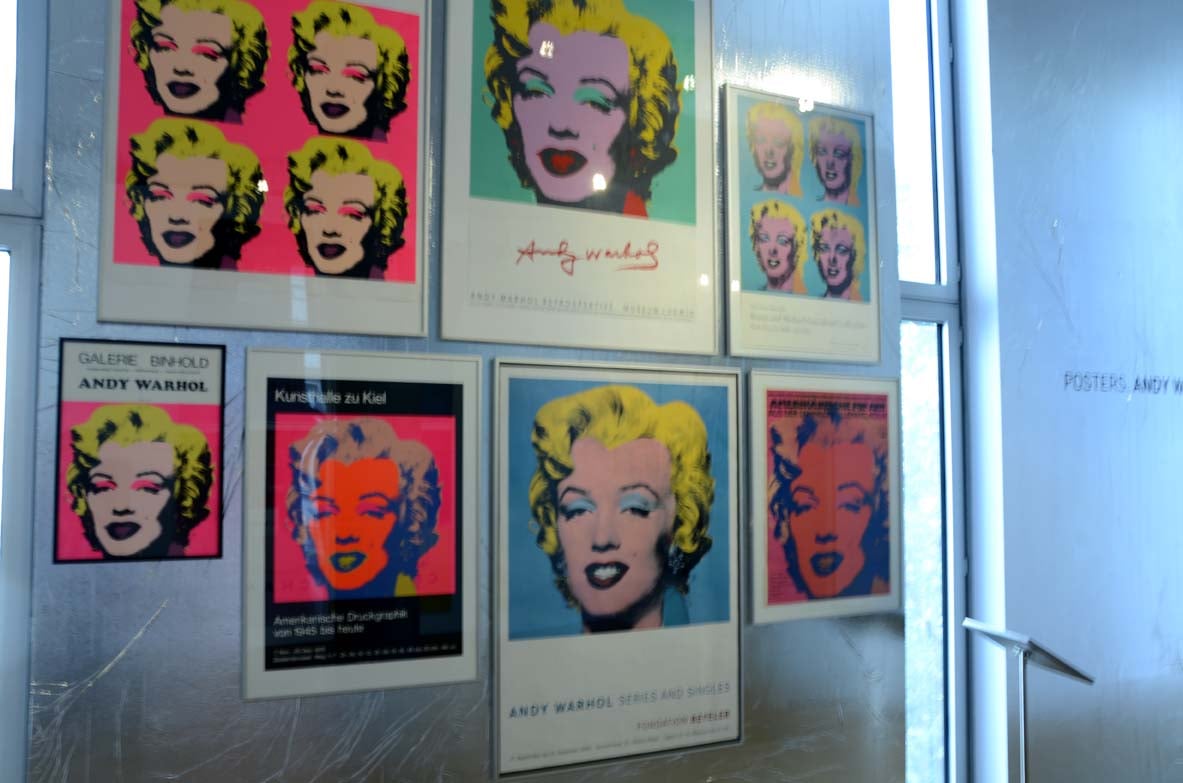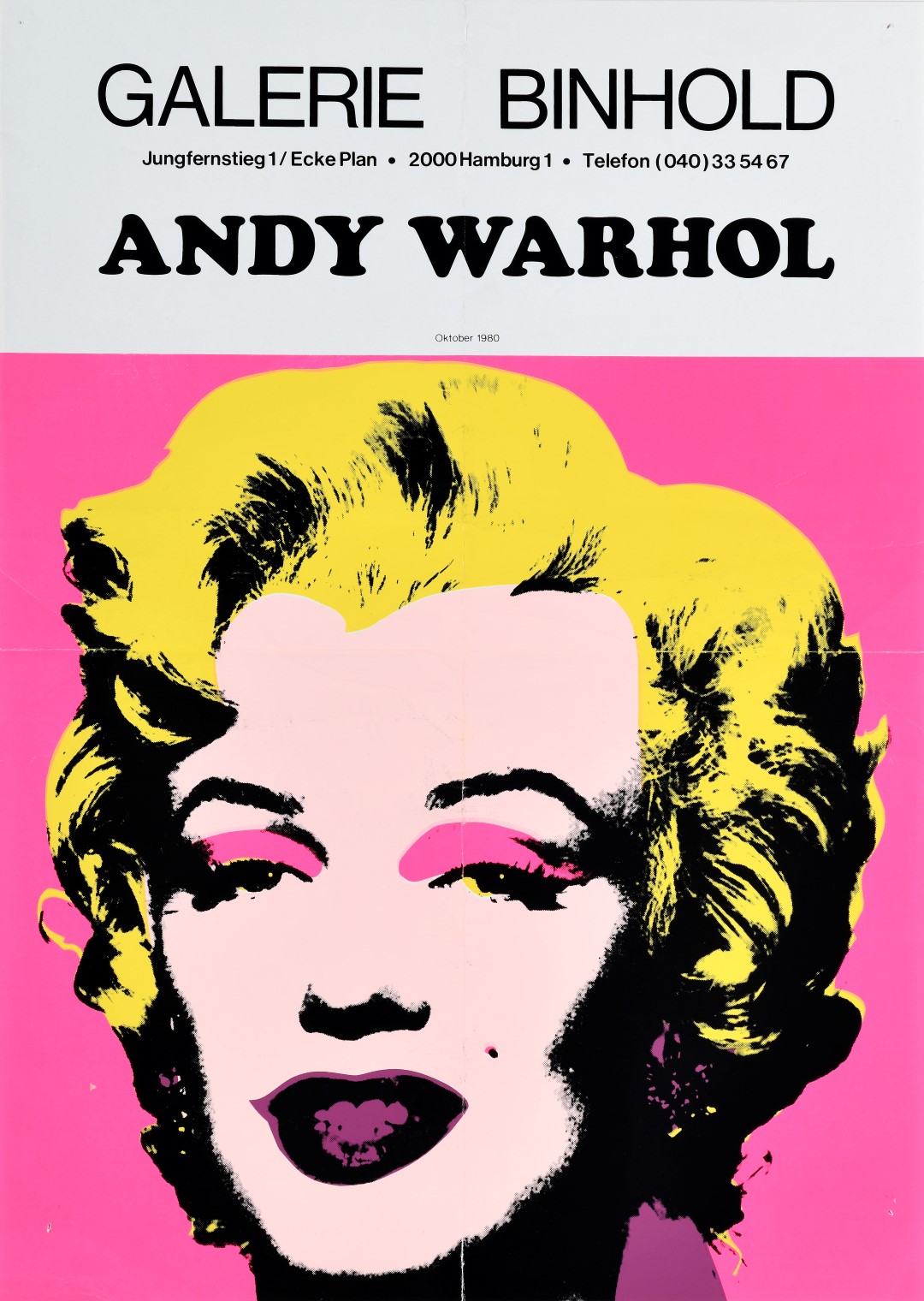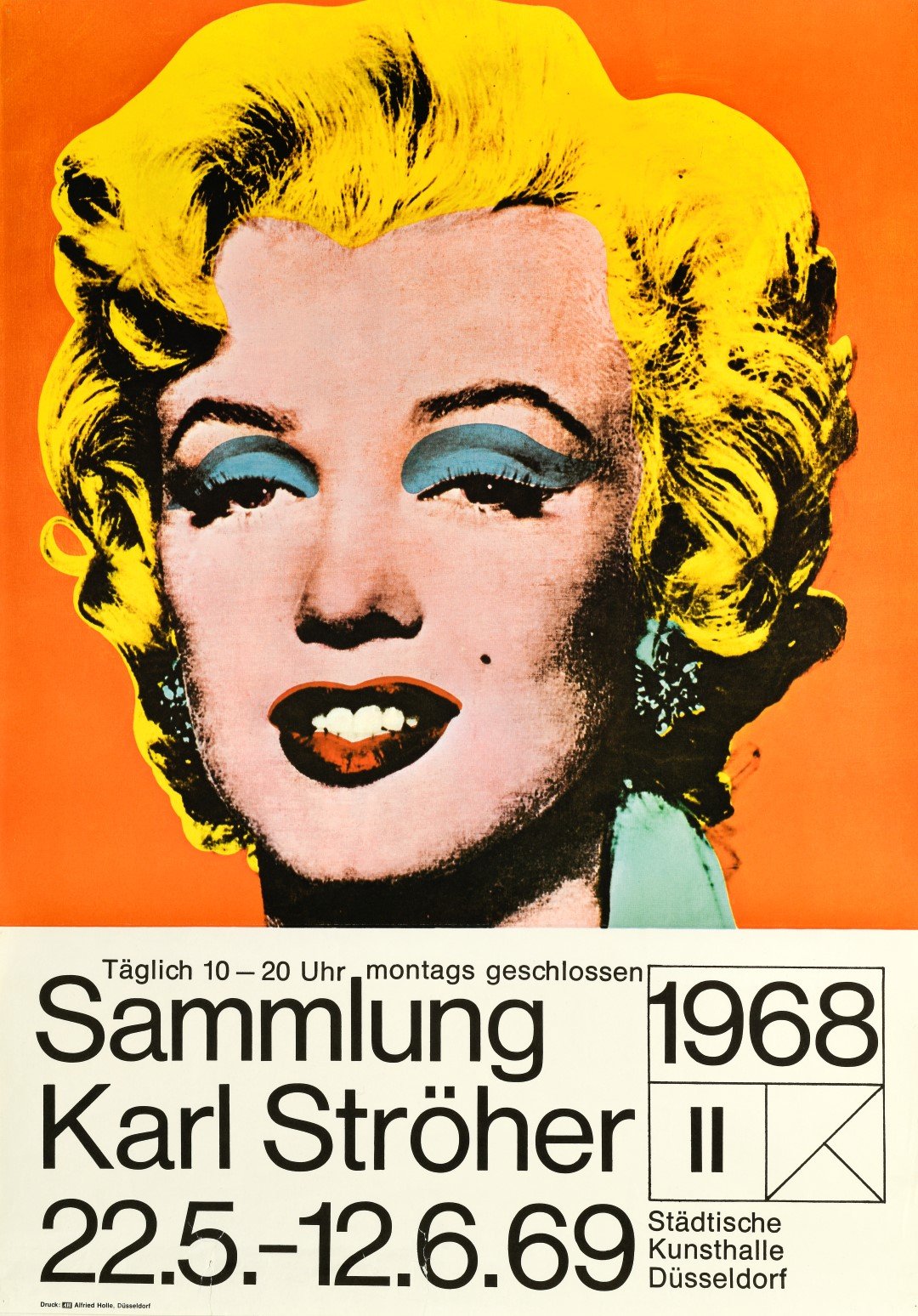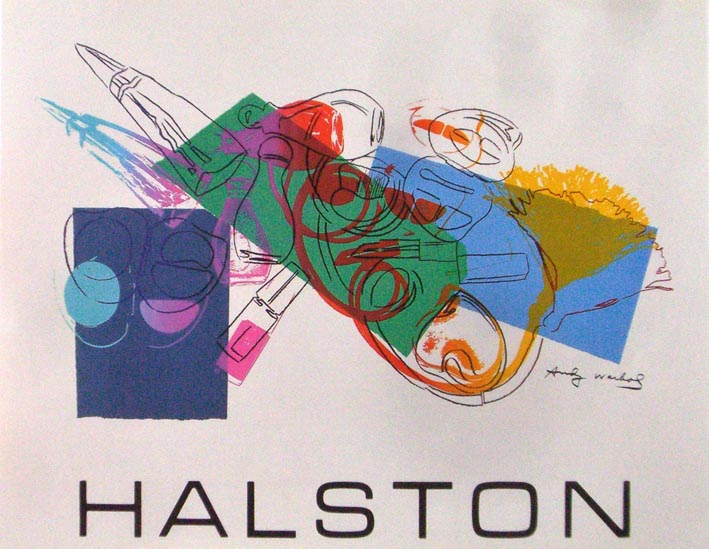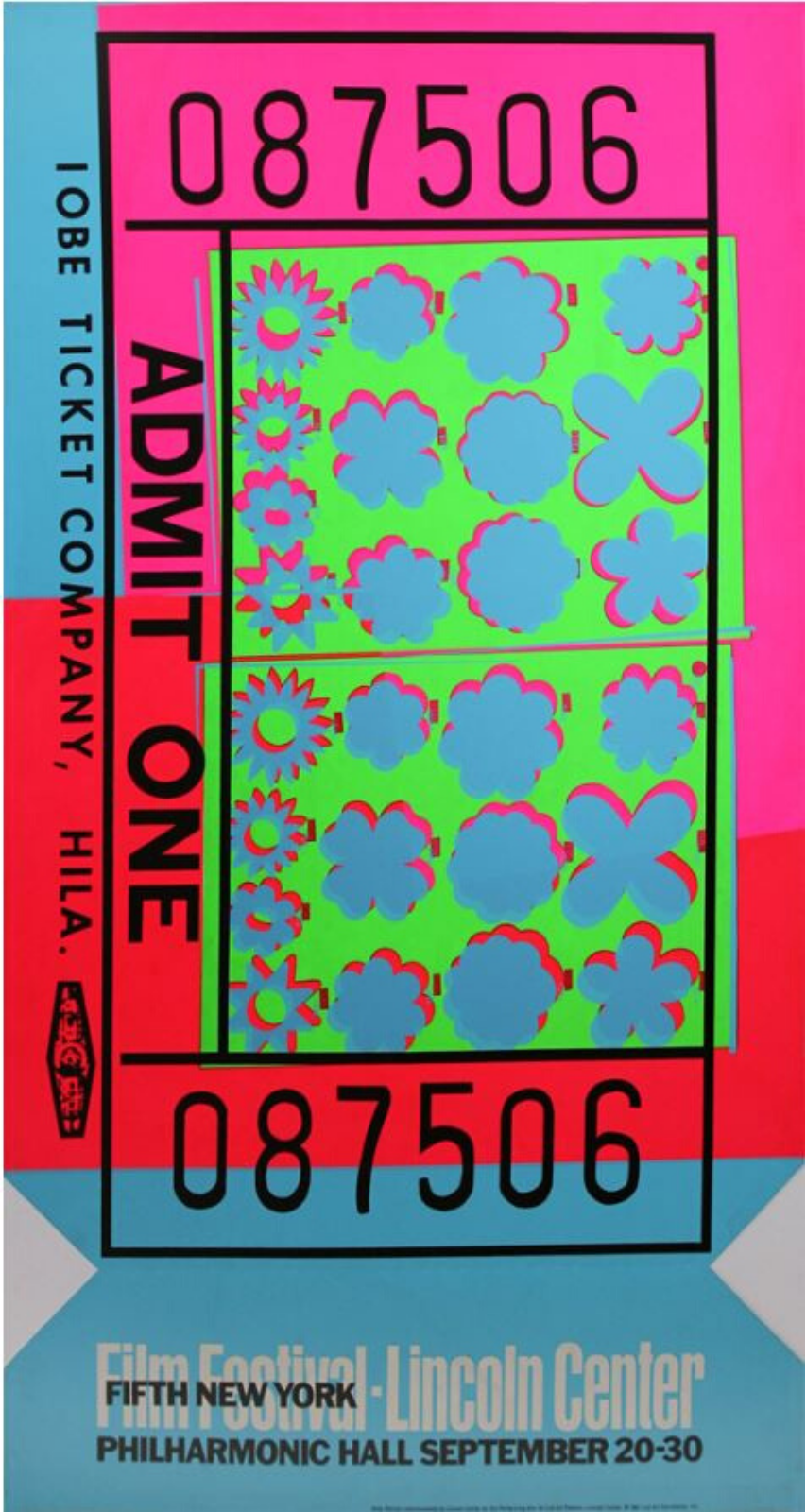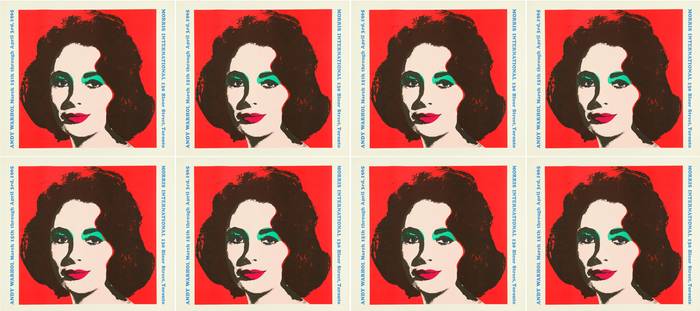Andy Warhol
Andy Warhol (1928–1987) was painter, illustrator, photographer and film-maker; he published magazines and books; he ran the Factory, gave musicians and models a helping hand up on their way to fame – there is not much in the cultural activity of New York in the 1960s to 80s which he didn’t observe with a shrewd eye and often help to shape.
A less well-known fact is that Warhol started his career in the 40s as a graphic designer. He achieved great success with illustrations for brochures and books and showed these works in his first exhibitions. However, there’s no route leading from there to his later posters. Having made the switch from illustrator to free artist in the early 60s, Warhol gave up drawing pleasing illustration and from then on, he created large-format paintings with details from the world of advertising and the popular press. In his own inimitable way, he overprinted and over-painted black & white photographs with colored areas, tracing the contours with a flowing line, and repeated and varied the same motifs again and again. His pictures glorify the icons of American culture; equally their fame helped his art gain unique popularity.
Warhol’s international breakthrough came in 1964/65 and it is during this period that, at the request of art gallery owners, he began to print his first posters. Like the paintings and his limited-edition graphic prints, they show stars from Elizabeth Taylor to Mick Jagger, or the banal-ties of the world of consumerism, whether soup cans or cows. From the early “mailers” – sent out by the gallery Owner Leo Castelli – up to the late reproductions of painting series, they proclaimed Warhol’s international success.
The seventies to early eighties was the portrait period: The wealthy and the famous, from Indian Chiefs to Hollywood Stars were photographed by Warhol with a Polaroid camera. These photos were used as the basis for paintings and silk-screen prints. Posters were almost constantly appearing for the shows in which the new series were being presented. In addition, there were other posters for special occasions such as for a Fassbinder film or the Montreux Jazz Festival. Although Warhol’s posters could not replace the large-format paintings, they nonetheless convey a vivid and impressive insight into the themes and motifs of the great Pop Artist.
